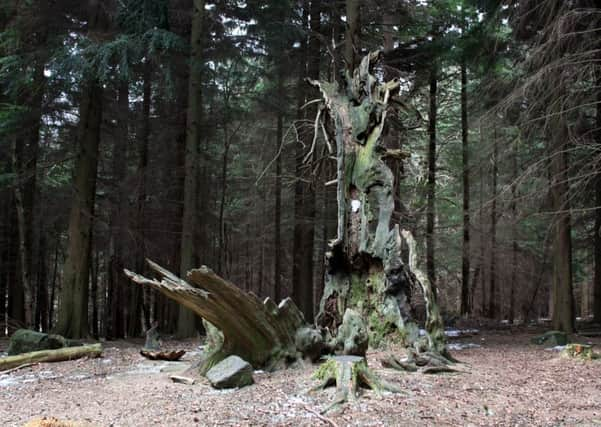Forest’s future is shining bright


Shining Cliff is one of Derbyshire’s most important woodlands and a major restoration project has been launched to protect and enhance the unique environment.
The ancient site, near Ambergate, is also home to a famous old yew, called the Betty Kenny Tree.
Advertisement
Hide AdAdvertisement
Hide AdDuring the late 1700s Betty Kenny and her charcoal burner husband Luke lived in this huge tree, reputed to be over 2,000 years old, where they raised their eight children.
The family used a hollowed-out bough as a cradle and local legend suggests this is the origin of the nursery rhyme “rock-a-bye-baby”.
Following a fire in 1930 only the wizened remnants of this relic now remain although the site is still popular with visitors and walkers.
Albin Smith, from the Forestry Commission who manages the wood, said: “Shining Cliff has an amazing history. The ecology and habitats are very important but so is the cultural heritage.
Advertisement
Hide AdAdvertisement
Hide Ad“The general ambience of the wood is very special and during the blue bell season it is an absolute picture.”
Designated as a Site of Special Scientific Interest in the 1980s, the 78 hectare beauty spot is the rare remains of the historic Duffield Frith – once a royal hunting forest brimming with game and deer.
Conservationists are now set to slowly remove most of the conifer trees and replace them with native broadleaves like oak, ash lime birch and rowan.
Invasive vegetation like Himalayan balsam and rhododendron will be removed and archaeological sites – such the remains of the charcoal burning industry which date back to the 16th century - will be surveyed.
Advertisement
Hide AdAdvertisement
Hide AdAlbin added: “We are also working on a 50 year design plan which will take an even longer term view. By thinning conifers like Corsican pine and Japanese larch and encouraging native trees to regenerate we will make significant gains for wildlife and plants.”
Shining Cliff is also home to what may be England’s most southerly population of the hairy northern wood ant, along with veteran trees, birds and rich animal and plant-life around springs seeping through the ground.
Such habitats - fragile yet incredibly valuable for wildlife - have been likened to the UK’s rainforests.